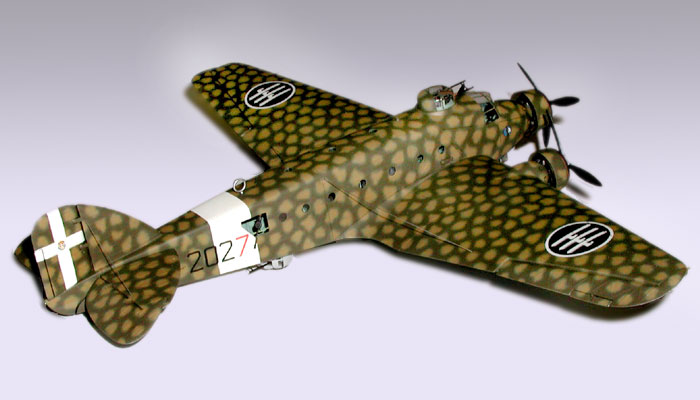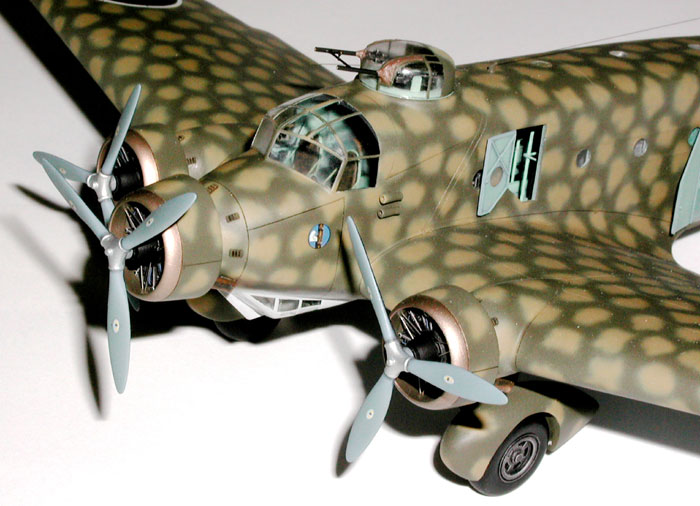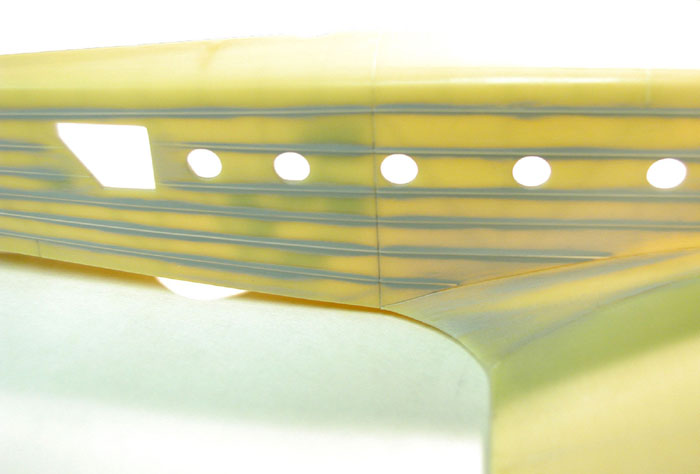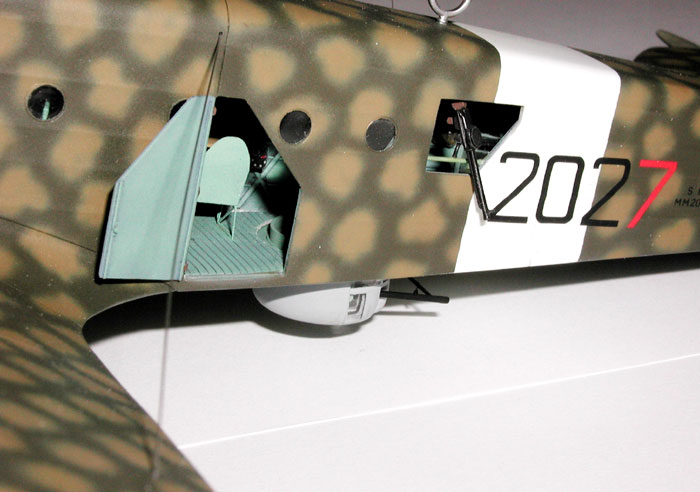|
Savoia Marchetti S.M. 81
Pipistrello
by Scott Battistoni
|
 |
|
Savoia Marchetti S.M. 81
Pipistrello |

HyperScale is proudly sponsored by Meteor
Productions
The SM. 81 Pipestrello was designed and manufactured in the 1930’s. It
was the predecessor to the more famous SM. 79 Spaviero.
The SM. 81 was loved by its aircrews for being a very stable bombing
platform, its heavy load lifting capacity, and ruggedness. Mussolini
liked the aircraft enough to assign one called “The Tortoise” as his
personal transport.
However as the war progressed, the beloved SM. 81’s were quickly
relegated to transports and glider towing due to their slow cruise speed
at altitude.

The SM. 81 also has a lesser-known claim to fame as being involved in a
rare WWII dogfight where bomber versus bombers occurred. A lone SM. 81
was pounced on by three Vickers Wellesly’s, where upon the Wellesly’s
came out victorious after an approximate 12 minute battle where the rear
gunners onboard the Wellesly’s took turns riddling the Pipistrello with
bullets.
SuperModel's
1/72 Scale S.M. 81
|
Italian aircraft modeling is often a neglected subject in the
modeling industry. This is a shame given the fascinating color schemes
applied to the Regia Aeronautica aircraft during WWII.
Back in the early 1970’s, the Italian firm “Supermodel” released several
1/72 kits of Italian WWII aircraft. While these kits are substandard in
today’s modeling market, they should not be overlooked. With a little
tender loving care, these kits have the potential of being transformed
into little gems.
I decided 3 weeks before the IPMS USA 2002 Nationals at Virginia
Beach, Virginia to start work on this project. My model ended up taking
“Best Italian Aircraft award”, and First Place in it’s category.
Interior
The entire cockpit was scratchbuilt, consisting of no less than 1383
parts glued in place for the cockpit interior. Some of the interior
details came from various PE sets, and the Cooper Details generic radio
set. I actually had to stop detailing the interior due to the time
crunch of the approaching convention.

Click the thumbnails below
to view larger images:
Structural and Glazing
Supermodel left off the “ribbed” fuselage, horizontal, and vertical
tail details. I simulated this fabric covered effect by first scribing a
line in place of each rib location. This was followed by gluing
Plastruct's new line of strip styrene .010 rod placed into the scribed
rib lines. These styrene ribs were then blended in with Gunze Sanyo
Mr. Surfacer brush on type filler. Careful sanding finished off the
blending aspect of the ribs. All other panel lines on the model were
re-scribed.

The kit clear pieces were discarded in favor of Falcon vacform
canopies found in their Italian aircraft sets. However, you still have
to use the kits lower turret clear piece as Falcon strangely enough left
this out. All of the side “round” windows were produced using a punch
and die set and .015 clear styrene.
Exterior Details
I opened the wheel spats to show off the wheels. These mud covers on
the real A/C were often removed in the field on the real aircraft. The
new wheels were produced by combining Tamiya 262 main tires, with a
Hasegawa Typhoon wheel rim inserted into the tire.

All turrets and guns were scratchbuilt for the model. The kits stock
engines which aren’t bad were detailed out with wire and tubing.
New exhaust collector rings and stubs were made and added to the
engines.
My model was then painted with Tamiya acrylics mixed to the appropriate
colors. I used a Paasche H1 for the overall color and a Badger 100 SG
dual action airbrush for the mottling set at around 8 to 10 PSI on the
compressor.
The decals came from SkyModels new Italian Bomber sheets, and Tauro’s
National Insignia sheet.
And there you have it - a 30 year old kit brought up to today’s
Tamiya/Hasegawa standards in 3 weeks. All it took was a little patience
and elbow grease.

All of my documentation for this kit came from a rare IPMS Milan club
produced mini booklet done on a photocopier. A local friend of mine just
happened to have a copy of this rare booklet which included interior
shots and scale drawings. My thanks to you Mike L. for lending me that
information.
Click on the thumbnails
below to view larger images:
Model, Images and Text Copyright © 2003 by
Scott Battistoni
Page Created 13 March, 2003
Last Updated 17 March, 2004
Back to HyperScale
Main Page
|
Home |
What's New |
Features |
Gallery |
Reviews |
Reference |
Forum |
Search